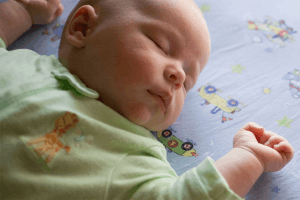Safe Sleep for Babies
In the first few weeks of life, babies spend up to 16 hours a day asleep. That's a lot of time snoozing, which is why it's important for parents and caregivers to make sure infants are placed in safe sleep positions. Unfortunately in Ohio, 3 babies die each week in unsafe sleep environments. These deaths are preventable by keeping in mind a few safe sleep ABCs: Babies are safest Alone, on their Back, in an empty Crib.
Baby Safe Sleep Tips
The tips below have been shown to decrease the risk of SIDS and deaths due to unsafe sleep. All family members, friends, childcare provides and babysitters should follow these recommendations every time a child sleeps.
- Place your baby to sleep in the same room you sleep, but NOT the same bed or sleep surface.
- Always put babies to sleep Alone, on their Backs, in a bare Crib, bassinet, portable crib or play yard that meets current safety standards.
- The bed should be flat with a firm mattress and a tight fitted sheet. Do not put a plastic cover over the mattress.
- Do not put toys, stuffed animals, pillows, bumper pads, blankets or anything else in bed with your baby. These items can strangle or suffocate your baby.
- Babies should be dressed in a t-shirt or onesie and a sleeper and/or sleep sack if needed.
- Babies up to 1 year of age should always be placed on their back to sleep during naps and at night.
- Breastfeed as much as you can for as long as you can, this helps reduced the risk of SIDS. The American Academy of Pediatrics (AAP) recommends breastfeeding as the sole nutrition for the first 6 months. When you add solid foods to your baby’s diet, continue breastfeeding until at least 12 months. You can continue to breastfeed after 12 months if you and your baby desire.
- Schedule and go to well-child visits.
- Keep your baby away from smokers and places where people smoke.















